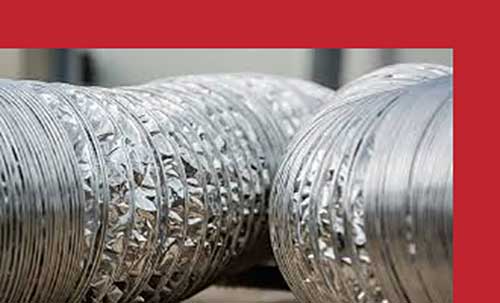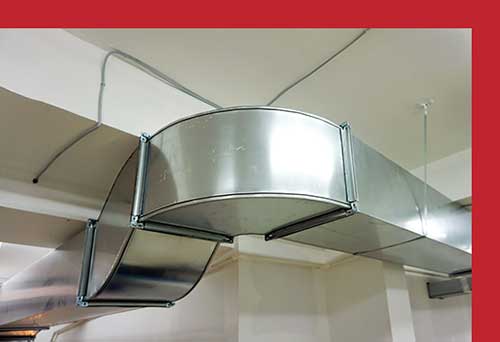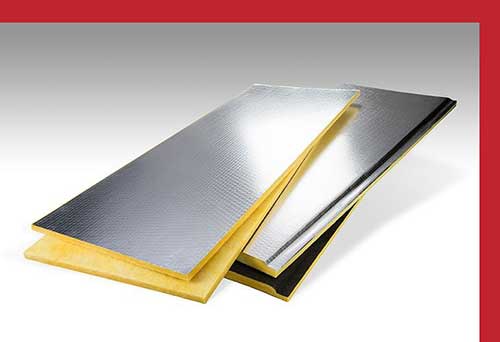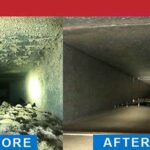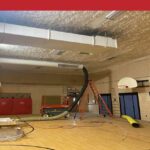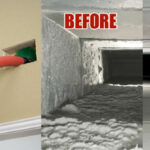Different Types of Ducts and Why They Matter
Air ducts are used to achieve a structured indoor air distribution throughout a property. Properties can be residential, industrial, or commercial in nature. There are numerous types of air ducts, and we’re here to provide you with a detailed overview of them. It is highly recommended to realize the importance of choosing the right material for your HVAC needs, and we have this list to help you understand the use of each type, as well as the differences and advantages.
Remember, you should maintain your air conditioner system and order air duct cleaning services at least twice a year to avoid an expensive air duct replacement, call The Duct Kings of San Antonio today for a free inspection of your ducts and vents!
Flexible Ductwork
Flexible ductwork, as its name implies, is a flexible and more versatile type of material. Its primary advantage is its flexibility, which allows it to be utilized even in the most awkward locations where metal ductworks are not a feasible choice. In general, flexible ductwork is easy and quick to install, and it offers an inexpensive approach to ductwork projects.
While it seems that flexible ductwork is a formidable choice, it is not without flaws. Its advantage of being flexible can also become a disadvantage as it can be very prone to incorrect installation. It also has an average lifespan of about 15 years, which is one of the shorter air duct lifespans in the lineup. Due to its lightweight nature, flexible ductwork can create noises when air current passes through it. Lastly, because it is more prone to friction compared to metal ducts, it is very important to ensure proper measurement and accurate sizing.
Advantages
- Inexpensive
- Lightweight
- Very versatile
Disadvantages
- Shorter structural lifespan
- Prone to miscalculated sizing and incorrect installation
Rigid Ductwork
Rigid ductwork is a type of ductwork constructed with several materials that are filled with insulation. Normally noted to have a very reliable structure because it uses high-end materials, rigid ductwork ensures quiet air current flow, especially when compared to flexible ductwork.
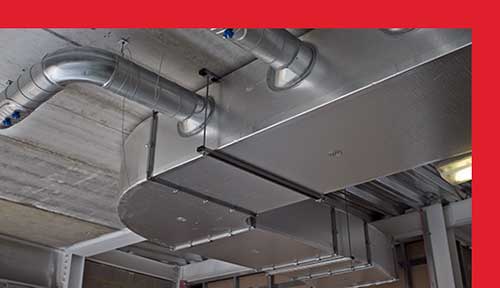
Sheet Metal Ducts
Sheet metal ducts are the most common material used in rigid ductwork and are made from aluminum or galvanized steel. It is lightweight in nature and is proven to be highly resistant to mold. While its durability is generally unquestionable, it is prone to leak in the joints when different pieces are attached.
Advantages
- Very durable
- Lightweight
- Proven mold resistance
- Long structural lifespan
Disadvantages
- Expensive
- Prone to leaks when installed incorrectly/inaccurately
Fiberglass-lined Ducts
Fiberglass-lined ducts are considered to be specialized sheet metal ducts lined with high-quality fiberglass either inside or outside the duct structure are used for commercial properties like schools, hospitals, etc. This allows effective temperature control while also preventing condensation from forming within the structure. Fiberglass-lined ducts are also known to reduce the acoustics of the entire HVAC system, thanks to the muffling capability of the insulation.
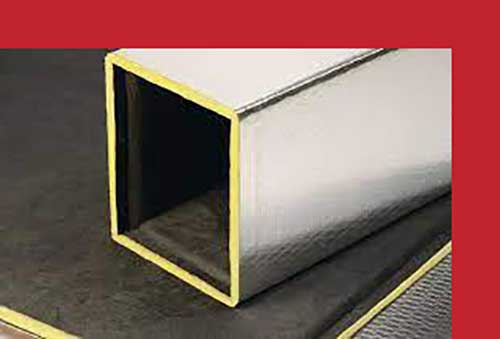
Advantages
- Significantly reduced acoustics ensure quiet operations
- Prevents condensation
- Good thermoregulation
Disadvantages
- Health hazard when ducts start to degrade
- Prone to mold, mildew, and bacterial growth
- Difficult to maintain and clean
Fiberboard Ducts
Fiberboard ducts are considered to be an updated or improved version of fiberglass-lined ducts. This is because, in fiberboard ducts, the fiberglass fibers are compressed and sealed. This addresses the main problem of fiberglass-lined ducts, which is the fibers getting mixed with the circulating indoor air. Fiberboard ducts are typically covered with a foil, which serves as a moisture and air barrier.
Fiberboard ducts are also known to possess great insulation capability, which means you don’t need supplemental insulation. Now, the thing about fiberboard ducts is that they are also very prone to contamination and the growth of mold, mildew, and bacteria. In addition, fiberboard ducts are rough in texture, which can lead to friction in the indoor airflow, thus reducing the operational efficiency of the HVAC system.
Advantages
- Prevents fiberglass fibers from mixing with indoor air
- Exceptional insulation capability
Disadvantages
- Prone to mold, mildew, and bacterial growth
- Rough structure impedes HVAC system efficiency
Which Duct Type is the Best?
While there is no direct answer on which duct type is the best, it is very important to understand and find a balance between the advantages and disadvantages in relation to the requirements of your property. According to the North American Insulation Manufacturers Association (NAIMA), there are several factors that must be considered in selecting the ideal HVAC duct system. These factors include temperature and acoustic control, fungus and mold resistance, safety and reliability, condensation control, energy conservation, and performance. Every ductwork type has its own lineup of advantages and disadvantages, but we can help you decide which one works best for you based on the following:
- Budget Considerations
- Property Requirements
- Supplier Availability
- Installation Service Options
These factors will help you identify what ductwork type best fits your requirements and the corresponding maintenance and cleaning services that come with it.
Let’s Fix Your Ductwork Cleaning Requirements – Here at Duct Kings of San Antonio!
The good thing about ductwork types and their differences is that their cleaning requirements can all be addressed by a highly professional and capable HVAC cleaning and maintenance service company. You might have noticed that some of the identified disadvantages involve the capability of the HVAC cleaning and maintenance services company – that’s why we are here!
We at The Duct Kings of San Antonio carry years of solid experience in a wide range of ductwork types, from flexible to rigid ductwork of any type. Our systematic and highly professional approach to the cleaning and maintenance of air ducts for various residential and commercial properties ensures that your HVAC systems will be attended to correctly – satisfaction is guaranteed!

